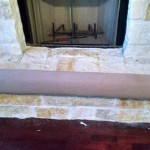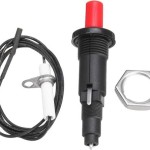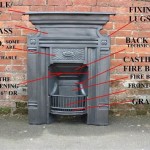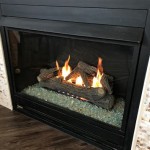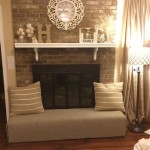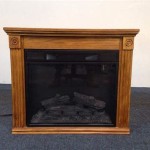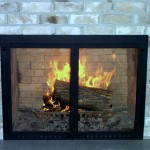TV Above Gas Fireplace: Assessing the Risk of Heat Damage
Mounting a television above a gas fireplace is a popular design choice for many homeowners, offering a visually appealing and space-saving solution. However, the potential for heat damage to the television is a significant concern that requires careful consideration. The heat produced by a gas fireplace can negatively impact the delicate electronic components within a television, leading to reduced lifespan, performance issues, and even complete failure. Understanding the factors that contribute to this risk is crucial for making an informed decision about TV placement and implementing preventative measures.
The decision to place a television above a gas fireplace necessitates a thorough evaluation of the fireplace’s heat output, the distance between the fireplace and the television, the presence of a mantel or other shielding, and the television's heat tolerance. Ignoring these factors can result in costly repairs or premature replacement of the television, undermining the aesthetic benefits of the arrangement.
Understanding Heat Transfer and Television Sensitivity
The primary danger comes from the transfer of heat from the fireplace to the television. Heat rises, and in the absence of adequate shielding, the area directly above the fireplace can experience significantly elevated temperatures. Televisions are designed to operate within a specific temperature range, typically between 0°C (32°F) and 40°C (104°F). Exceeding this range can damage the internal components, particularly the LCD or OLED panel, the power supply, and the circuit boards.
Different types of gas fireplaces produce varying levels of heat. Some models are designed for purely aesthetic purposes and generate relatively low heat, while others are intended for supplemental heating and produce significantly more. The BTU (British Thermal Unit) rating of the fireplace is a key indicator of its heat output. A higher BTU rating signifies a greater heat output and a higher risk of damage to the television. Gas fireplaces also vary in their venting configurations, with some models directing heat upwards and outwards more aggressively than others.
Modern televisions, while technologically advanced, are surprisingly sensitive to heat. The liquid crystals in LCD panels are susceptible to damage from prolonged exposure to high temperatures, leading to discoloration, image distortion, and reduced brightness. OLED panels, while boasting superior picture quality, are also vulnerable to heat degradation. Excessive heat can accelerate the aging process of the organic materials in the OLED panel, resulting in decreased lifespan and color accuracy. Electronic components, such as capacitors and resistors, can also be damaged by heat, leading to malfunctions and overall performance degradation. The plastic housing of the television can also warp or melt under extreme heat conditions, further compromising its functionality and appearance.
Key Factors to Consider Before Mounting
Before proceeding with mounting a television above a gas fireplace, several critical factors must be evaluated. These factors will help determine the potential for heat damage and inform the decision-making process.
First, the distance between the top of the fireplace and the bottom of the television is of paramount importance. A greater distance allows for more dissipation of heat before it reaches the television. A general guideline is to maintain a minimum of 12 inches of clearance, but this can vary depending on the fireplace’s heat output and the presence of a mantel. Using a thermometer to measure the temperature directly above the fireplace while it is operating at its highest setting can provide valuable data for assessing the heat exposure risk.
Second, the presence and size of a mantel significantly impact the heat transfer. A mantel acts as a shield, deflecting heat away from the television. A deeper mantel provides greater protection. The material of the mantel also plays a role; non-combustible materials like stone or metal are more effective at blocking heat than wood. If a mantel is not already present, installing one is a highly recommended measure to mitigate the risk of heat damage.
Third, the type of gas fireplace is a crucial consideration. Ventless gas fireplaces, which do not require a chimney or venting system, tend to produce more radiant heat than vented models. This increased radiant heat can pose a greater risk to the television. Vented gas fireplaces, on the other hand, direct a significant portion of the heat up the chimney, reducing the amount of heat that reaches the area above the fireplace. The type of gas fireplace and its venting configuration should be carefully considered before mounting a television above it.
Mitigation Strategies for Heat Exposure
If mounting a television above a gas fireplace is desired, even after considering the risks, several mitigation strategies can be implemented to minimize heat exposure and protect the television. These strategies aim to reduce the amount of heat reaching the television and improve its ability to withstand the heat that does reach it.
Installing a robust and deep mantel is one of the most effective methods for deflecting heat away from the television. The mantel should extend far enough forward to create a significant barrier between the fireplace and the television. The mantel should also be made of a non-combustible material, such as stone or metal, to further enhance its heat-blocking capabilities. The depth of the mantel should ideally be at least 8-12 inches to provide adequate shielding.
Employing heat-resistant materials behind the television can also help to further insulate it from the effects of heat. Applying a layer of heat-resistant insulation to the wall behind the television can help to prevent heat from being conducted through the wall and into the television's components. Specialized heat shields designed for protecting electronics from high temperatures are also available and can be installed behind the television for added protection.
Regular monitoring of the temperature behind the television is crucial for ensuring that the heat mitigation strategies are effective. Using a thermometer or temperature sensor to monitor the temperature in the area behind the television while the fireplace is operating can provide valuable data for assessing the ongoing risk of heat damage. If the temperature consistently exceeds the television's recommended operating range, further adjustments to the mitigation strategies may be necessary. Reducing the fireplace's heat output, increasing the distance between the fireplace and the television, or adding additional shielding may be required to maintain a safe operating environment for the television.

5 Ways To Protect Your Tv From The Heat Of Fireplace Tips

Will A Fireplace Damage My Tv We Love Fire
Can I Mount A Tv Over My Fireplace Heatilator

Mounting A Tv Above Fireplace 5 Things To Consider

Can I Mount My Tv Above The Fireplace

5 Ways To Protect Your Tv From The Heat Of Fireplace Tips

Is It Safe To Mount Your Tv Above The Fireplace Chimney And Wildlife

6 Reasons You Shouldn T Mount A Tv Over Fireplace

Will A Fireplace Damage My Tv We Love Fire

Mounting A Tv Above Fireplace 5 Things To Consider
Related Posts

